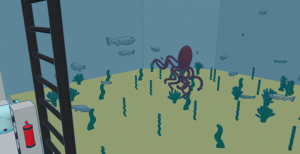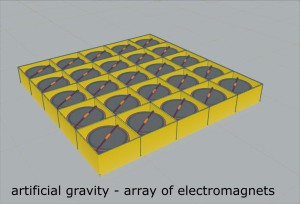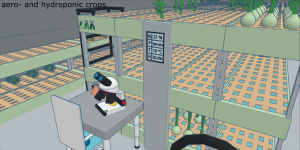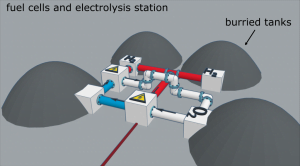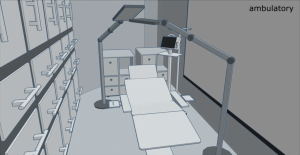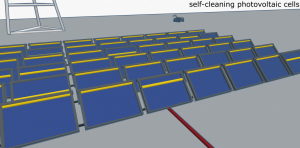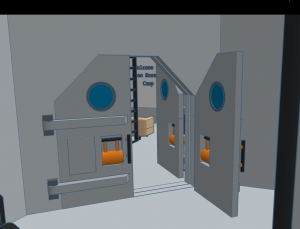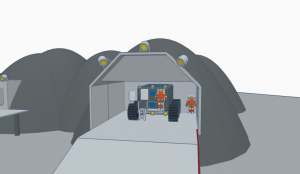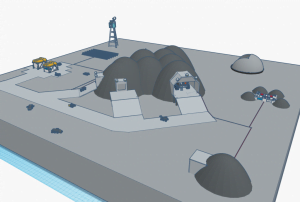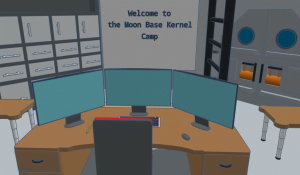Moon Camp Explorers Gallery 2020-2021
In Moon Camp Explorers each team’s mission is to 3D design a complete Moon Camp using Tinkercad. They also have to explain how they will use local resources, protect astronauts from the dangerous of space and describe the living and working facilities.
Team: Moon Base Kernel
Michal Bylina Primary School no 310 Warsaw Poland 14 First Place – ESA Member states
External link for 3d
|
Project description
Name of our camp, Moon Base Kernel, indicates role which it plays. It will be “the seed” for larger habitat in the future. Beside of intensive exploration of the Moon and space, this camp aims to study adaptation of life on the Moon. Second purpose is to obtain elements and materials for Earth. Crew consists of five people. Each of them has several specializations necessary for such group of people to function independently. We decided on project that does not require advanced works in lunar ground. Important aspect of our project is its modularity. We rely on repeatable components enable easy expansion and modification of modules. Geometric shape of modules ensures mechanical stability. In order to find balance between large enough usable space and amount of materials used in construction we designed compact structure. This makes it easy to maintain stable atmospheric conditions for living. Dangerous devices (e.g. RTG) are located away from camp. The most important aspect is safety. Camp is covered with about 1-m-thick regolith. This protects against radiation, meteorites and possible temperature changes. Each module is equipped with condition monitoring systems. Modules are connected by double doors and possess individual emergency life-support systems. Connection with external environment is realized through docks and airlocks (1 technical and 2 for astronauts) which serve also as garages for vehicles. Artificial gravity is realized by means of electromagnetic coils and permanent magnets in shoes. Power supply of electromagnets is switched by magnetic field in vicinity of shoe. |
|||
|
Where do you want to build your Moon Camp?
Close to the Lunar Poles Why did you choose this location?
We choose crater near the South Pole. The main reason is the discovery of the ice presence in this area. The interiors of craters contain thinner layer of loose regolith. Such area will be easier for the construction site preparation and less troublesome in case of landers (e.g. blowing dust). We prefer sites close to slope of crater to have access to both areas – permanently shadowed and exposed to sunlight. Such locations will give us vicinity to ice and opportunity to use photovoltaics. Proximity to crater rim will allow exploration of area beyond. How do you plan to build your Moon Camp? Which materials would you use?
The first works will be done by unmanned robots. They will prepare terrain for buildings. First modules will be build using construction elements delivered from Earth. In order to minimize weight of transported materials, we propose to make walls filled inside with regolith. In next step, parts of constructions will be made with matter obtained from regolith. It is rich in chemical elements such as oxygen, silicon, iron, calcium, aluminum, magnesium and titanium. It will be possible to produce components for camp development. For this, all feasible methods will be used (chemical and thermal processing, 3D printing, CNC machines). Explain how your Moon Camp will provide the astronauts with:
|
|||
|
Water
|
Food
|
Electricity
|
Air
|
|
At the initial phase of settlement, water will be transported from Earth. However, large amounts of water are needed for the base to function. Hence, the next stage is to obtain water from the ice mined on the Moon. It will be stored in form of oxygen and hydrogen produced from water by electrolysis. The used water is purified and reused. Other sources of water are man-made biological waste (e.g. at present about 80% of water on the ISS is recycled). Aquarium used to study behavior of aquatic life on the Moon also serves as water storage facility. |
The following products will be delivered from the Earth: freeze-dried food (plant and primarily animal origin), the basic components necessary for the proper functioning of the human body (vitamins, amino acids, minerals, proteins, fiber, carbohydrates, etc.), and nitrogen-rich compounds essential for growing plants. Botanical garden (aero- and hydroponic crops) and aquarium (algae, shellfish, and other aquatic organisms) will be local sources of food. These will also be used to study the adaptation of selected species due to their immunity to harsh conditions. An additional solution is an innovative method of 3D printing plant-based meat. |
Our base has three primary energy sources: photovoltaic power station, a radioactive thermoelectric generator and fuel cells as a backup or temporary source (located away from the base for safety reasons). Excess energy will be stored in high-efficiency batteries. |
Oxygen will be extracted from water and stored in tanks. Nitrogen must be supplied from Earth because there is not enough of it on the Moon. The Camp is furnished with systems to recover carbon dioxide or redirect it to grow plants. |
|
Describe a day on the Moon for one of your Moon Camp astronauts
Due to human diurnal rhythm length of day in camp is the same as the Earth’s day, i.e. 24 hours. We chose commander because of his fairly responsible position. We assume a split of the day into three roughly equal parts: (1) sleep, (2) meals, rest, exercises, (3) helping the crew, heavier and lighter work. An example of commander’s daily schedule in details: 8.00 wake-up / preparation for day 8.30 physical exercises (1 hour) 9.30 morning toilet 10.00 breakfast (1 hour) 11.00 control of camp parameters 11.30 collaboration with robot operator (1 hour) 12.30 control of workshop parameters (1 hour) 13.30 lunch (1 hour) 14.30 rest 15.00 talking to a doctor/psychologist about condition of the crew 15.30 collaboration with botanist on research (1 hour) 16.30 inspection of parameters of recycling systems 17.00 checking on radiotelescope parameters 17.30 team meeting 18.00 checking on camp parameters 18.30 dinner 19.00 rest / e.g. chess game with programmer (1 hour) 20.00 contact with the Earth base (1 hour) 21.00 physical exercises (1 hour) 22.00 checking on camp parameters 22.30 evening toilet 23.00 relaxation / massage in the chair 23.30 preparation for sleep |
|||


